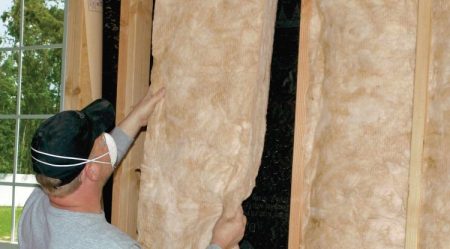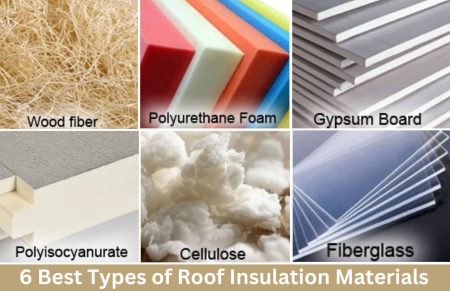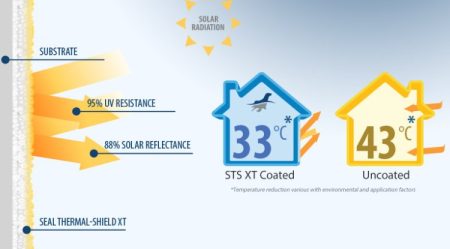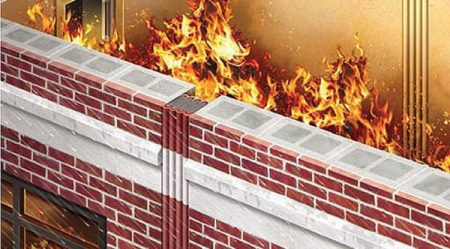Exterior Insulation Decoded The Blueprint for a Home that’s both Beautiful and Efficient
Are you looking to transform your home into a beautiful and energy-efficient haven? Exterior insulation is the key to achieving both goals. By understanding the principles and techniques behind exterior insulation, you can create a comfortable living space while reducing energy consumption. In this article, we’ll delve into the blueprint for a home that’s not only visually appealing but also highly efficient. Let’s unlock the secrets of exterior insulation and embark on a journey to upgrade your home’s performance and aesthetics.
Contents
1. Introduction to Exterior Insulation
Exterior insulation, also known as external insulation, involves insulating the exterior walls of a building rather than the interior. This method offers several advantages over traditional interior insulation, including improved energy efficiency, enhanced thermal performance, and reduced thermal bridging.
By insulating the outer walls, exterior insulation provides a continuous thermal barrier that prevents heat transfer, minimizing energy loss and reducing heating and cooling costs. Additionally, it eliminates thermal bridging, which occurs when heat escapes through the studs, resulting in energy wastage and temperature fluctuations within the building.
2. The Benefits of Exterior Insulation
Exterior insulation offers a wide range of benefits that make it an attractive choice for homeowners. These advantages include:
Improved Energy Efficiency
With exterior insulation, you can significantly enhance the energy efficiency of your home. The continuous insulation layer acts as a shield, minimizing heat loss during the winter and heat gain during the summer. This results in reduced reliance on heating and cooling systems, leading to lower energy bills and a smaller carbon footprint.
Enhanced Comfort
Exterior insulation creates a more comfortable indoor environment by reducing drafts, cold spots, and temperature fluctuations. It helps maintain a consistent and pleasant temperature throughout the year, ensuring that your home remains cozy and welcoming.
Noise Reduction
Exterior insulation also acts as a barrier to noise, providing an additional layer of soundproofing for your home. It helps to minimize external noises, creating a quieter and more peaceful living space.
Increased Durability
By protecting the exterior walls from temperature variations and moisture, exterior insulation helps to extend the lifespan of your building. It reduces the risk of cracks, rot, and structural damage, preserving the integrity of your home.
Aesthetically Pleasing
Exterior insulation offers an opportunity to upgrade the visual appeal of your home. It allows for various finishes, such as cladding or rendering, which can transform the appearance of your property. Whether you prefer a traditional or modern style, exterior insulation provides a versatile solution to enhance the aesthetics of your home.
3. Key Components of Exterior Insulation Systems
To understand the blueprint for an efficient and beautiful home, it’s essential to grasp the key components of exterior insulation systems:
Insulation Materials
Insulation materials are the foundation of any exterior insulation system. Common options include expanded polystyrene (EPS), extruded polystyrene (XPS), mineral wool, and polyisocyanurate (polyiso). Each material has its unique properties, such as thermal conductivity and moisture resistance, which should be considered when selecting the right one for your home.
Insulation Thickness
The thickness of the insulation layer plays a crucial role in optimizing energy efficiency. It should be determined based on climate conditions, local building codes, and desired energy performance. A thicker insulation layer provides higher levels of thermal resistance and better energy savings.
Weather Barriers
Weather barriers, such as a vapor barrier and an air barrier, are essential elements of exterior insulation systems. A vapor barrier prevents moisture from entering the building, protecting it from potential damage, while an air barrier seals the insulation, preventing air leakage and improving energy efficiency.
Cladding and Finishes
Cladding and finishes are the visible layers of the exterior insulation system, contributing to the aesthetics of your home. They can be chosen to complement the architectural style and personal preferences. Popular cladding options include brick, stone, wood, fiber cement, and metal panels.
4. Installation Process and Considerations
Proper installation is crucial to ensure the effectiveness and longevity of the exterior insulation system. Here are some key considerations for the installation process:
Professional Expertise
While exterior insulation can be a DIY project for experienced individuals, it’s recommended to consult professionals for complex installations. Experts can assess your home’s specific needs, provide guidance on material selection and installation techniques, and ensure compliance with local building codes.
Building Permits
Before commencing the installation, check with your local authorities regarding building permits and regulations. Compliance with these requirements is essential to avoid legal complications and ensure the safety and quality of your home.
Maintenance and Inspections
Regular maintenance and inspections are vital to keep your exterior insulation system in optimal condition. Inspect for any signs of damage, such as cracks, gaps, or water infiltration, and promptly address them to prevent further issues.
5. Frequently Asked Questions (FAQs)
Q1: Is exterior insulation suitable for all types of homes? A1: Exterior insulation can be applied to various types of homes, including new constructions and existing buildings. However, it’s recommended to consult professionals to assess the feasibility and specific requirements of your home.
Q2: Will exterior insulation make my home feel warmer in the summer? A2: Yes, exterior insulation helps to regulate temperature year-round. It minimizes heat gain in the summer, keeping your home cooler and more comfortable.
Q3: Can I choose any cladding material for my exterior insulation system? A3: The choice of cladding material depends on factors such as your budget, climate conditions, and personal preferences. Consult with professionals to select the most suitable option for your home.
Q4: How long does exterior insulation last? A4: With proper installation and maintenance, exterior insulation systems can last for several decades. The lifespan may vary depending on factors such as climate, material quality, and regular upkeep.
Q5: Will exterior insulation increase the resale value of my home? A5: Upgrading your home with exterior insulation can increase its resale value. Energy-efficient features are highly sought after in the real estate market, and the improved aesthetics can also enhance the overall appeal.
With the blueprint for exterior insulation in your hands, you’re ready to create a home that’s both visually stunning and energy-efficient. Embrace the power of exterior insulation and unlock the potential to transform your living space. Enjoy the comfort, cost savings, and environmental benefits it brings, while adding value to your home.





